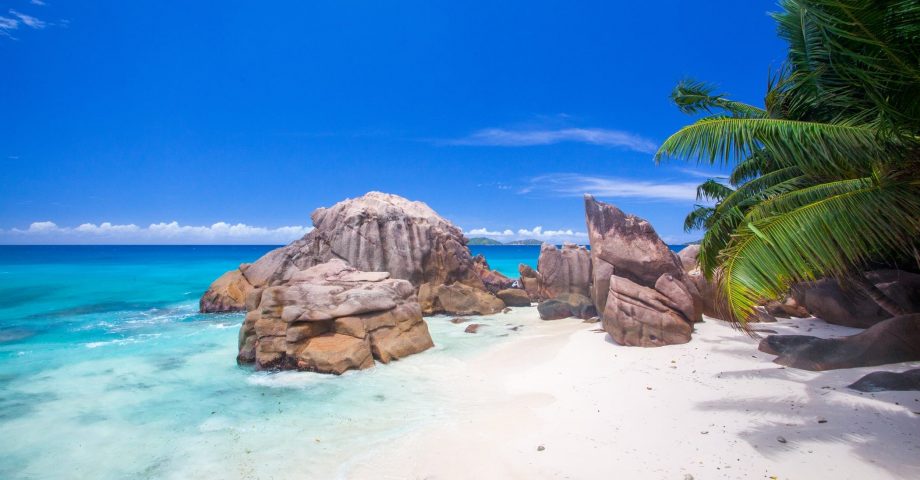Seychelles is one of the most stunning tropical island countries in the world. A haven of white sandy beaches, clear waters filled with marine life, lush rainforests, and an entire world of history and culture. No wonder the islands are a famous honeymoon destination, it’s a true paradise on Earth! So, whether you’re newlyweds or just tropical island fans, we’ve prepared these fun facts about Seychelles and its history – a private tour through the archipelago to enjoy from the comfort of your home!
1. Where are The Seychelles?
The geographic coordinates for Seychelles are 4.6167° S, 55.4500°. Made up of 115 islands, Seychelles is an archipelago in the Indian Ocean.
2. They are small but mighty!
The islands of Seychelles are classified into 42 inner granitic islands and 73 outer coralline islands. It has a total area of 176 square miles (455 square kilometres).
It had a population of 119,878 in 2022. By population, Seychelles ranks number 200 in the world.
3. What do people speak in Seychelles?
The official languages are English, French, and Creole.
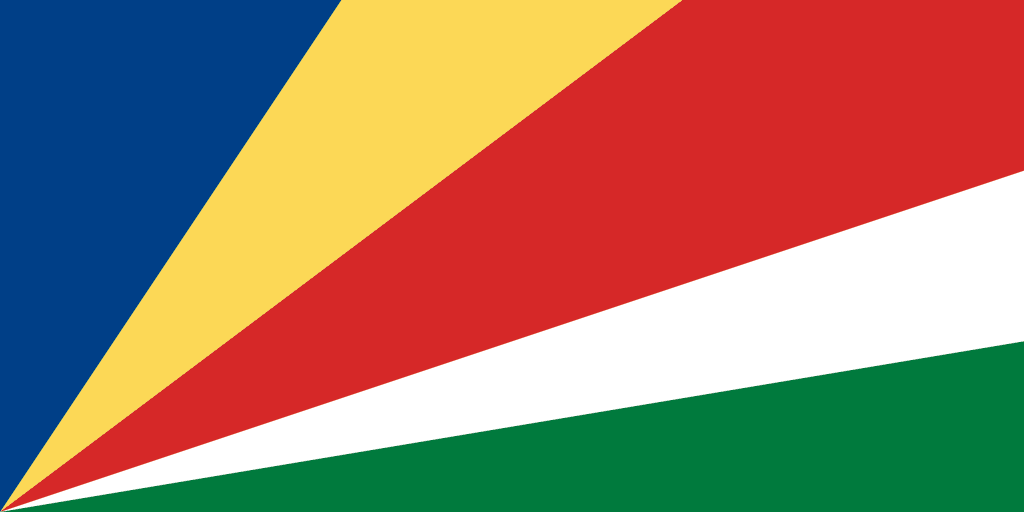
4. What’s the capital of Seychelles?
Situated on the island of Mahé, the capital of Seychelles is Victoria; it has a population of 26,450 (2010) and lies 932 miles (1500 kilometres) east of the mainland of Southeast Africa.
Seychelles’ capital is one of the smallest in the world. The Victoria Clocktower reflective of London’s “Big Ben” is situated at the centre of the city and just around the corner sits the Sir Selwyn Clarke Market, a luxurious symbol of the city’s unique charm, characterized by a close and friendly community. One day is more than enough time to explore this cultural hub of a city.
5. It’s a seriously dense city!
Despite its size, the city is home to around 25,000 inhabitants.
Victoria may be smaller than most capitals, but this place certainly gives meaning to the phrase “enjoy the little things in life”.
6. Want to spend money here?
The official currency of Seychelles is the Rupee. Within the native dialect, it’s known as the roupi.
7. It took over a century for people to start inhabiting the islands.
The uninhabited islands of Seychelles, according to some scholars, were sighted by Vasco de Gama in 1502. However, documented arrivals didn’t occur until 1609.
8. France had a major hand in the islands’ history.
France made a formal claim to the islands, in 1756, and they were named after Jean Moreau de Séchelles, the Minister of Finance under Louis XV, King of France.
9. However, they didn’t have ownership forever.
The long struggle for the islands between France and Great Britain ended in 1814 when they were conceded to the British. In 1814, the Seychelles and Mauritius were given to England by the Treaty of Paris.
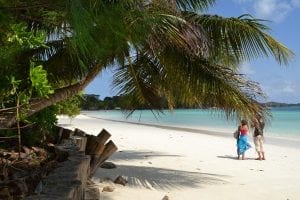
10. People flocked here from the east, too.
During the 19th century, Chinese and Indian tradesmen, together with former slaves settled on the island.
11. The islands are now independent.
In 1976, Seychelles gained their independence and became members of the Commonwealth.
12. X marks the spot!
Pirates used to seek out Seychelles as their safe haven, during the early days.
The favourite pirates’ hideouts were the beaches, Anse Forbans on Mahe, and Côte D’Or on Praslin.
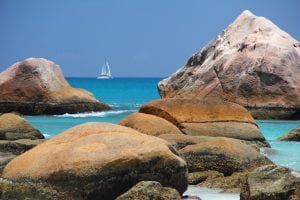
13. No, really – there’s buried treasure here.
It’s believed that the infamous pirate Olivier Levasseur hid treasure worth over $160,000 in Bel Ombre, in the north of Mahe. For all you treasure hunters out there – happy hunting! The treasure is still to be found!
14. A record-holding tortoise lives here!
Esmeralda, the world’s largest tortoise, lives in Seychelles. Weighing in at around 670 pounds and aged over 170 years old, she’s the heaviest and oldest living land tortoise in the wild. She’s so heavy that she made it into the Guinness Book of World Records!
15. It’s a natural aviary.
The archipelago is famous for being a bird lovers’ dream, with its different selection of rare species that includes sea, land, and migrant birds. Among the plenty of colourful birds found on the island, 12 are classified as endemic.
Seychelles’ warbler, also known as the Timerl Dezil is one of those famous rare birds, close to extinction in the 20th century.
There were just 26 of these birds left in the wild by 1968. Luckily, conservationists have managed to bring them back from the edge of extinction and there are now around 3,500 of these dainty little songbirds.

16. What is the Coco de Mer?
Weighing up to 30 kg, the native fruit Coco de Mer found on only two of the islands in the archipelago produces the heaviest and largest seed in the world.
17. What fruit do people enjoy here?
An iconic fruit to the Seychellois people is the breadfruit.
During the colonial era, breadfruit represented a vital source of energy for the plantation’s workers.
18. There’s an odd 007 link.
Do you remember the character, Milton Krest, from Ian Fleming’s spy saga “For Your Eyes Only? The famous author came to the Seychelles islands in 1958 to find inspiration and ended up naming one of his characters, Milton Krest, after a tonic and ginger beverage that he tasted during his stay.
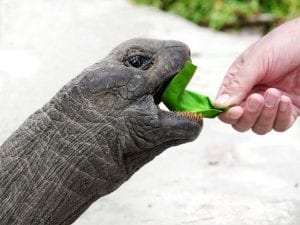
19. It’s a celebrity getaway spot.
A lot of celebrities choose to vacation in Seychelles and enjoy the amazing private islands.
Prince William and Kate Middleton, now the Duchess of Cambridge, chose the North Island of Seychelles for their honeymoon, a spot previously chosen by David and Victoria Beckham.
20. It’s played host to pageants, too.
In 1997 and 1998, the Miss World Beauty Pageant was held in Seychelles. The media used this popular event to show off the stunning islands. Afterward, many tourists started coming to discover the islands’ beauties.
21. People study here for free!
Seychelles is one of the only African nations to offer free education.
In its early years, there was little education provided to the Seychellois people. The government incorporated improved learning opportunities into its education system in 1981. By 2012, litreacy among the people increased to 94%.
Today, Seychelles has successfully developed a required learning system for children up to the age of 18.

22. UNESCO adores the Seychelles.
The islands are home to 2 UNESCO World Heritage Sites, the Aldabra Atoll and Vallée de Mai.
23. It’s absolutely sweltering here!
Seychelles’ climate is tropical oceanic, with little temperature variation during the year.
24. The islands’ exports are highly valued.
Seychelles exports vanilla, coconuts, rum, coconut oil, fish, and guano (a fertilizer made from seabird and bat feces). Seychelles’ largest foreign exchange-earners are the tourism and fishing industries.
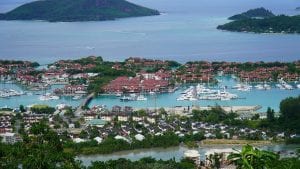
24. Life expectancy here isn’t too bad at all.
The average life expectancy is 73.40 sunny years (2021).
25. Much of the area is now part of natural protection.
Much of Seychelles has been given over to nature reserves.
26. Wildlife is rife!
The second-largest atoll in the world, the Aldabra atoll, is home to the world’s largest population of giant tortoises…and it’s also home to the world’s largest land crab, the coconut crab.
The Cousin Island is also home to eleven endemic land-birds including the Seychelles Magpie-robin (Endangered), Seychelles Sunbird, Seychelles Fody, and the Seychelles Blue-pige.
27. People love diving here.
It’s a scuba diver’s paradise; fish life is prolific thanks to the strict conservation rules and the isolated position of the archipelago’s and the waters are full of beautiful rocks that are often covered in soft corals and sponges – stunning.
If you go scuba diving or snorkeling lookout for angelfish, butterflyfish, squirrelfish, and soldierfish – magical!
If it’s sharks you want to see, head to the outer islands where you could spot a Grey Reef, Silver Tip, Nurse, or the occasional Hammerhead.
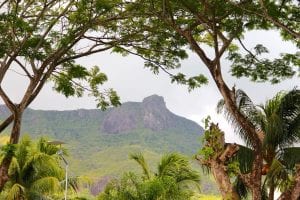
28. There are other huge creatures out to sea here.
If you’re in Seychelles in August or between October and January, keep your eyes peeled and you might just see a Whale Shark – a gigantic shark that visits the outer islands to feed on plankton during these months.
29. Calling Seychelles is easy.
Want to call your friends in Seychelles? You’ll need to use the international dialing code, +248.
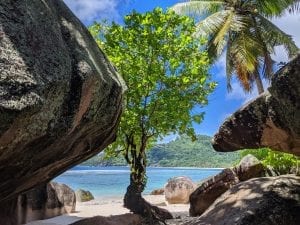
FAQs about Seychelles
Is it expensive to visit Seychelles?
You’ll likely spend around $200 per day on an average vacation here, but you can, of course, spend much more!
When is best to visit Seychelles?
Generally, you will find that April to May, and October to November, present the best times for cooler winds and still sunny weather.
Does it ever rain in Seychelles?
No, it hardly ever rains in Seychelles - so do make sure to leave that umbrella at home!
Do you know any fun facts about Seychelles? Share them in the comments below!
